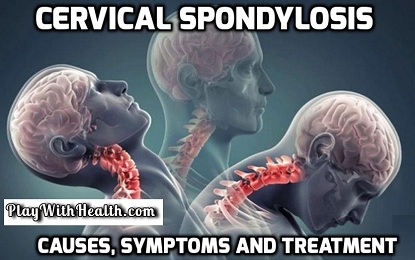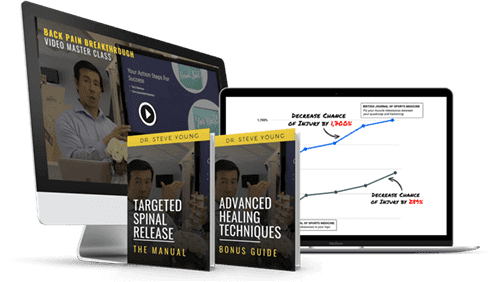Cervical Spondylosis – Causes, Symptoms and Treatment
Cervical spondylosis is a common age-related condition which affects the discs and joint in the cervical spine, which is situated in your neck. It is also known as neck arthritis or cervical osteoarthritis. It is developing because of wear and tear of cartilage and bones. While it is largely happening due to age factors, but it can also be caused by various other factors as well too.
According to the medical survey, this situation is presented into more than 82% of peoples those are over 60 years of age, although some people who have this never experience the symptoms.
For some peoples, it can cause stiffness, chronic and severe pain. However, there are many peoples have this problem are able to conduct normal and doing their daily activities.
Review I Love Panic Attacks – Know How To Overcome Anxiety and Stress Problems
Finding a specialist spondylosis doctor
Are you looking for specialist doctors with the most experience who can easily treat the cervical spondylosis? You can easily find the specialist doctor in google search by – cervical spondylosis doctor near me – You can also consult your insurance agents, family members, and your friends about some specialist doctors.
Causes of Cervical spondylosis
The bones and protective cartilage in the neck are prone to tear and wear. This can lead you towards the cervical spondylosis.
Some possible causes of cervical spondylosis includes:-
Bone Spurs:-
Overgrowth of the bones is the result of the body trying to grow some extra bones to make your spine stronger. Anyhow, this extra bone can press on delicate areas of your spine like in the nerves and spinal cord and it results in the pain.
Dehydrated spinal discs:-
Spinal bones have discs in between them which are thick and pad like cushions which absorbs the shock of twisting, lifting and other activities. Material like a gel inside this disc dries out over the time. This causes your bones spinal vertebrae to rub together more which can be very painful. According to a medical survey, this process begins around 40 years of age.
Herniated discs:-
A spinal disc can develop the cracks which allow the leakage of the internal cushioning material. This material can press on the nerves and spinal cord which results in the symptoms such as arm pain and numbness transmit down an arm.
Click here to read:- 15 Foods That Boost and Improve your Immune System
Injury:-
If you are suffering from neck injury like during car, bike accident, then this can easily accelerate your aging process.
Ligament stiffness:-
The strong cord which connects your spinal bones to each other can become even stiffer over time, and that effects movement of the neck and makes your neck feel tight.
Overuse:-
Some hobbies and occupations involve in the repetitive movements or lifting heavy things, like construction work. These can put lots of extra pressure on your spine which results in early tear and wear.
Risk factors of this condition:-
The higher risk factor for cervical is the age factor. Cervical spondylosis often develops as a result of changes in your neck joints as per your age. Dehydration, disc herniation, and bone spurs are all the results of aging.
Factors other than aging can increase your risk of cervical spondylosis. These include:
Neck Injuries
Work-related activities which put extra strain on the neck by doing typing or writing or by lifting heavy things.
Holding the neck in an uncomfortable position for a long time or by repeating the same motion throughout the day.
Genetic factors (cervical spondylosis in family history)
Overweight and inactive
Smoking
Click here to Read: Review – Turbulence Training – Fake of Legit
Symptoms of cervical spondylosis
Most of the peoples who are suffering from cervical spondylosis do not have any significant symptoms. If the symptoms do occurs then the range would from mild to severe pain and can also develop gradually or occurs suddenly.
One of the common symptoms of pain is around the shoulder blade. Some peoples complaints about the pain in arm and in the fingers too.
This pain might increase when:-
Sitting
Standing
Coughing
Sneezing
Tilting your neck backward
Muscle weakness is also a huge symptom in which it is getting very tough to lift your grasp or arms firmly.
Other common signs include:
Stiffness in the become worse
A headache which most of the occurs in the back of your head
Numbness or tingling which mainly affects your arms and shoulders; sometimes it occurs in the legs too.
A symptom which occurs less in frequency often includes a loss of bladder and a loss of balance or sometimes bowel control. If you find any of these symptoms then it is a time to visit the doctor immediately.
When to see a doctor
If you feel the sudden numbness or onset of tingling in the arms, shoulders or in legs or sometimes if you lose bladder and bowel control than it is the time to visit the doctor and take medical treatment because these symptoms are required a serious medical emergency.
If you find that this pain and discomfort starts to interfere in your failure routine activities then you can take time from your doctor and consult with him/her about your problem. to some people, this is happening because of age factor and there are treatments available for this problem which can easily reduce the stiffness and pain.
Testing and diagnosing the condition
Making of a diagnosis of the cervical spondylosis involves the ruling out of the other potential conditions like fibromyalgia. Making diagnose also involves the testing for the movement and determining the affected muscles, bones and nerves. Your primary care physician might treat the condition or refer you to a specialist doctor of orthopedic, neurosurgeon or neurologist for further tests and examinations.
Physical exam
Your doctor will ask your several types of questions regarding to your symptoms. After question your doctor will take some tests of your body which includes testing your muscles weakness, reflexes or sensory deficits and also will check the range of the motion of your neck. If your doctor finds necessity he can also check the movement of your walk too. All these tests will help the doctor to understand and determine if your spinal cord and nerves are under too much pressure or not.
If the doctor suspects cervical spondylosis than they will go for your imaging tests and also a test of your nerve function.
Imaging tests
CT scan provides more detailed images of the neck.
By taking x-rays they can check for the bone spurs and other abnormalities.
MRI scan can produce the images by using a magnetic field and radio waves which can easily help a doctor to locate exact pinched nerves.
In the myelogram test, a dye injection is been used to highlight some areas of your spine. X-rays or CT scan are then used to provide the more detailed images of the affected areas.
An electromyogram (EMG) is used to check that the affected person’s nerves are functioning normally when through test sending signals to the muscles. By this test, they are measuring your nerves electrical activity.
A nerve conduction study checks the strength and speed of the signals which are sending by your nerves. This test is done by placing electrodes on your skin where your nerve is located.
Click here To Read:- 8 Ways to Understand Insurance and Types of Insurance
Treating cervical spondylosis
Treatments for the cervical spondylosis focusing on providing the relief from the pain, lowering the risk of the permanent damage which help you to live your normal life again. Using nonsurgical methods in this treatment are normally very effective.
Physical therapy
Your doctor can consult you to take cervical spondylosis treatment from a physical therapist. A physical therapist can help your shoulder and neck muscles by giving you stretching tips and other exercises. By this, you can make your muscles stronger which can help you to come of the pain naturally.
Medications
If OTC (over the counter) drugs do not work on you than your doctor can prescribe you certain types of medications which includes:-
Muscle relaxants, like cyclobenzaprine (Fexmid), which treat muscle stiffness.
Narcotics, like hydrocodone (Norco), for pain relief.
Anti-epileptic drugs, like gabapentin (Neurontin), which relieve the pain caused by the nerve damage.
Steroid injections, like prednisone, which reduce the tissue inflammation and subsequently lesser pain.
Prescription nonsteroidal anti-inflammatory drugs (NSAIDs), like diclofenac (Voltaren-XR), which reduce the inflammation.
Surgery
If your condition is still very serious after taking all types of treatments and there is no positive response than there is an option left that taking surgery. This involves getting rid of the bone spurs, parts of neck bones or herniated discs to give your nerves and spinal cord more space. There is a very rare necessity for surgery in cases of cervical spondylosis. However, sometimes a doctor may recommend taking surgery when the pain is very severe and also there is no ability to move the arm or shoulder.
5 Days Fat Loss Accelerate – Get Result Every Time You Work Out
If your condition is mild, you can try a few things at home to treat it:
You can take OTC pain relievers like acetaminophen (Tylenol) or an NSAID, it includes naproxen sodium (Aleve) and ibuprofen (Advil).
Using cold pack or heat pack on your neck and in other affected areas can provide you pain relief from sore muscles. (Do it for very short time or it can harm your muscles).
Doing regularly stretching and exercises can help you to recover faster.
You can wear a soft neck collar or brace to make your neck straight by which you can get temporary relief from the pain. Avoid wearing them for a long time frame as it can make your neck muscles weaker.
Conclusion for cervical spondylosis
Cervical spondylosis is a common and mostly age-related health issue which causes the headache discomfort and stiffness related to your neck pain. Doctors may not be able to reverse your condition but they can recommend you conservative treatment which can help you to overcome from pain and discomfort.



